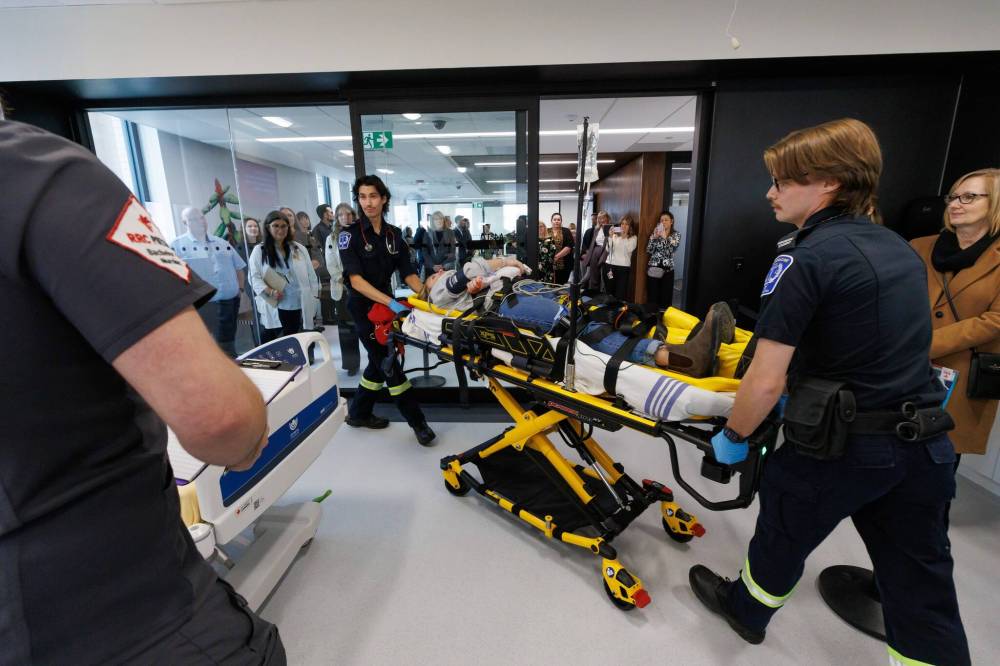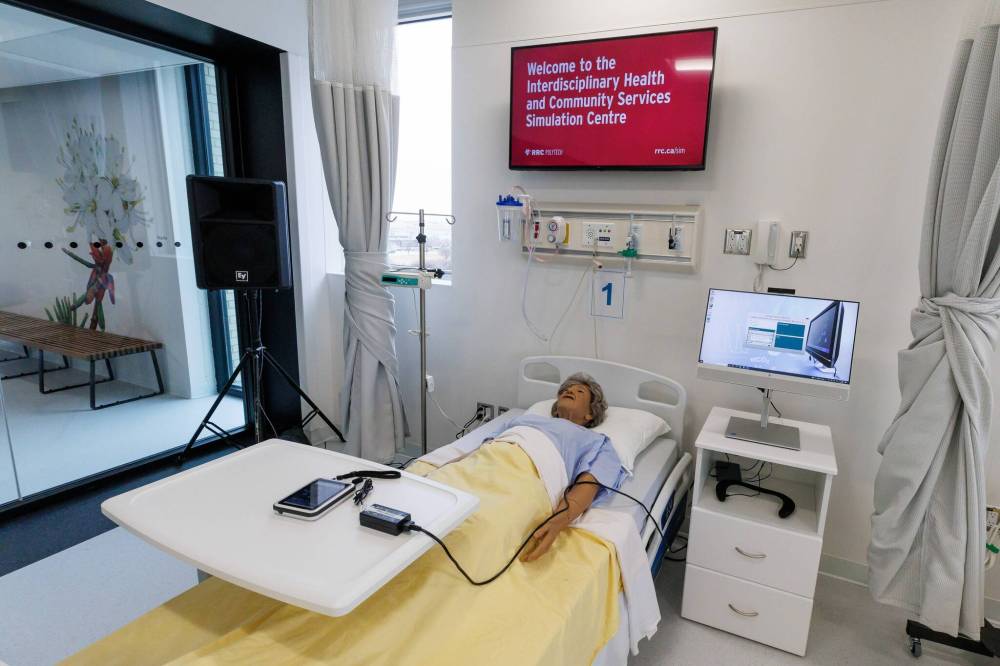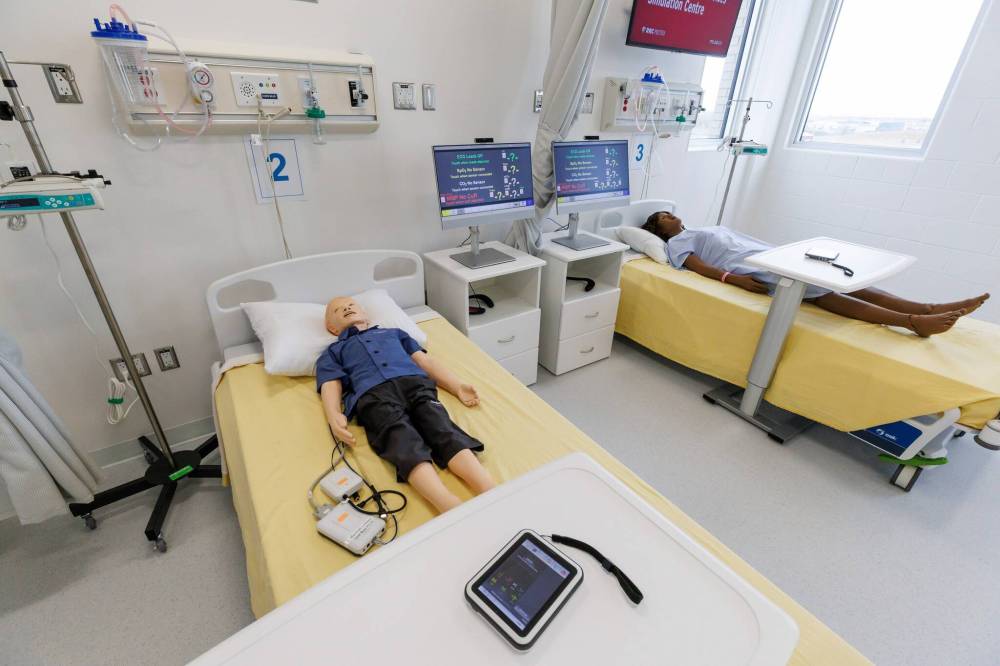‘Exciting new frontier’: RRC Polytech, U of M unveil new training, research facilities
Advertisement
Read this article for free:
or
Already have an account? Log in here »
To continue reading, please subscribe:
Monthly Digital Subscription
$0 for the first 4 weeks*
- Enjoy unlimited reading on winnipegfreepress.com
- Read the E-Edition, our digital replica newspaper
- Access News Break, our award-winning app
- Play interactive puzzles
*No charge for 4 weeks then price increases to the regular rate of $19.00 plus GST every four weeks. Offer available to new and qualified returning subscribers only. Cancel any time.
Monthly Digital Subscription
$4.75/week*
- Enjoy unlimited reading on winnipegfreepress.com
- Read the E-Edition, our digital replica newspaper
- Access News Break, our award-winning app
- Play interactive puzzles
*Billed as $19 plus GST every four weeks. Cancel any time.
To continue reading, please subscribe:
Add Free Press access to your Brandon Sun subscription for only an additional
$1 for the first 4 weeks*
*Your next subscription payment will increase by $1.00 and you will be charged $16.99 plus GST for four weeks. After four weeks, your payment will increase to $23.99 plus GST every four weeks.
Read unlimited articles for free today:
or
Already have an account? Log in here »
Hey there, time traveller!
This article was published 18/11/2024 (370 days ago), so information in it may no longer be current.
Two state-of-the-art post-secondary facilities are aiming to revolutionize research and education in Manitoba.
Beginning in the new year, RRC Polytech health-care students can practise transferring a trauma patient from an apartment building to a hospital bed at the new simulation centre on the Notre Dame campus.
The 16,000-square-foot space is designed to look like hospital rooms and a triage area, along with debrief rooms for students and instructors to discuss the simulations.

MIKE DEAL / FREE PRESS
Nursing And Paramedicine program students conduct a simulation at the grand opening of Red River College Polytechnic’s new Interdisciplinary Health and Community Services Simulation Centre on the Notre Dame campus.
“This is an exciting new frontier in how we can better train and prepare students to be confident in their careers,” RRC Polytech president and CEO Fred Meier said Monday at the centre’s grand unveiling.
Future nurses, allied health workers, child and youth-care workers, veterinary technologists and diagnostic sonographers will make use of the first-in-Manitoba facility.
Students will train with actors and mannequins and can get feedback from students listening to the simulations in the debriefing theatre.
The facility replaces the “lab” portion of many of the RRC programs that had limited real-world training outside of clinical training.
“The key idea behind this simulation centre is that it’s interdisciplinary, because students from different programs and disciplines will work together, just as they will do so in the workplace,” Meier said.
The centre will train more than 12,000 students across 13 health-care programs every year.
Health Minister Uzoma Asagwara said the new facility is sure to attract prospective students, educators and health experts.

MIKE DEAL / FREE PRESS
The 16,000-square-foot simulation centre is designed to look like hospital rooms and a triage area.
“It’s critical as we build up capacity in the health-care system that we follow the innovative trends of technology,” the minister said.
Elsewhere in Winnipeg, a $2.5-million research facility will probe tooth and tissue regeneration in fish to advance studies in dentistry.
Thousands of zebrafish and Mexican tetra fish at the new Rady Biomedical Fish Facility at the University of Manitoba may hold the key to unlocking treatments for tooth decay, cleft lip and cleft palate.
About 70 per cent of the genes of the fish are similar to those in humans, which makes them the ideal research subject, according to Devi Atukorallaya, an associate professor of oral biology at the Dr. Gerald Niznick College of Dentistry.
The freshwater fish also have shorter lifespans than traditional research animals such as mice, which means the findings will be available more quickly.
“We can study these cellular mechanisms using fish models, because we can do it under the microscope with the transparent fish eggs… it’s much quicker,” Atukorallaya said.

MIKE DEAL / FREE PRESS
Students can train with actors and mannequins in the new simulation centre.
Research on mice that could take years is condensed to mere months, the associate professor said.
The facility is the first of its kind in the Prairies and could revolutionize fish studies as it relates to human health, according to Benjamin Lindsey, assistant professor of human anatomy and cell science at the Max Rady College of Medicine.
Lindsey helped to model the facility after a similar institute in Australia that uses zebrafish in research on heart disease.
“There’s been past hires with good (researchers) but there’s not the infrastructure to bring them in, so unfortunately, they couldn’t consider them,” he said. “This is a bit of a game-changer.”
The two facilities present an opportunity to showcase Manitoba as a frontier for advanced education, said Minister of Advanced Education and Training Renée Cable.
The programs will not only keep students going through the K – 12 interested in staying in Manitoba for post-secondary education, but they will help to recruit from outside the province and other sectors, the minister said.

“We have really complex social and health issues that we can solve here. We don’t need to look outside of Manitoba to find those solutions, we can do it here,” Cable said.
Students will begin using RRC’s simulation centre in January.
nicole.buffie@freepress.mb.ca

Nicole Buffie
Multimedia producer
Nicole Buffie is a reporter for the Free Press city desk. Born and bred in Winnipeg, Nicole graduated from Red River College’s Creative Communications program in 2020 and worked as a reporter throughout Manitoba before joining the Free Press newsroom as a multimedia producer in 2023. Read more about Nicole.
Every piece of reporting Nicole produces is reviewed by an editing team before it is posted online or published in print — part of the Free Press‘s tradition, since 1872, of producing reliable independent journalism. Read more about Free Press’s history and mandate, and learn how our newsroom operates.
Our newsroom depends on a growing audience of readers to power our journalism. If you are not a paid reader, please consider becoming a subscriber.
Our newsroom depends on its audience of readers to power our journalism. Thank you for your support.
History
Updated on Tuesday, November 19, 2024 9:17 AM CST: Corrects spelling of Devi Atukorallaya's name

